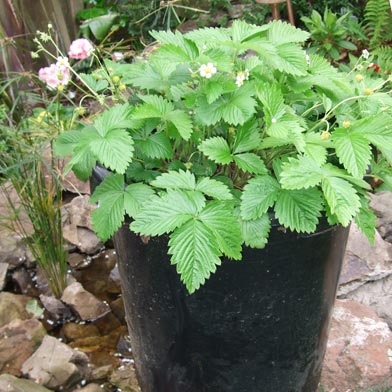
One rule of thumb here in San Francisco is “If you’re always planting, you’re always harvesting.” Whether its a fully grown head of lettuce in the ground, or a six pack of tomatoes in my window sill, you can have a continuous cycle of vegetable life all the time. It is easy and fun, and in this column for the SF Appeal, every Friday I’m going to show you how. But why should you listen to me? Well, let me tell you my story, and you can decide.
I grew up here in San Francisco and both parents were avid gardeners. I like to joke with my clients and say I have two green thumbs, one from each side of the family. As soon as I was old enough to walk, I was out pulling weeds and shoveling compost. In the summer I worked on my uncle’s farm, where we transferred thirty acres of rhubarb into a variety of crops for the local farmers market.
It was here that I first learned vegetable growing, and more importantly, growing vegetables from seed. Growing vegetables from seed is the most cost effective way to create an abundance of produce, and easy, too, once you know how to do it.
I began farming here in the Ingleside district in 2002. I had just retired from professional baseball with the San Diego Padres after a back injury ended my career. I went “in-law” hunting with one thing in mind, a backyard with a landlord who didn’t mind me renovating it.
I now own my own gardening and landscaping company, and have tried every type of vegetable and vegetable growing technique on the market. I experimented, I succeeded, I failed, I learned, and now teach my methods at Brooks Park Community Garden.
As urban farmers we all have very little space to work with, and in order to maximize our harvests we have to learn to work with very little space. Several years ago I stumbled across a book entitled Square foot gardening, by Mel Bartholomew. In it he discusses how to grow a wide variety of vegetables with very little effort, in a small space, from seed. This is the method I teach, and with very little investment, any amateur gardener can learn to grow a wide variety of organic vegetables in any space.
Let’s get started with something that’s so easy that even Eve is doing it, lettuce or strawberries in a pot.
Lettuce in a pot Get one small ten gallon black plastic pot available a Sloat Nursery (I don’t get a kickback or anything from Sloat, that’s just where I tend to shop. If you can find a locally owned and operated store that sells anything I mention for cheaper, let us all know in the comments!) for around 8 bucks; one bag of organic potting mixture available at Sloat for 9 bucks; and one package of lettuce seeds, whichever variety you want, also available at Sloat for around 2 dollars (in each package of seed are anywhere between 200 and 600 individual seeds. When stored in a sealed bag in the fridge, these seeds can last up to five years).
For around 20 dollars you can have organic lettuce continuously for several years. All you do is dump the soil in the bucket, make 6 half inch deep holes (equally spaced) and place 6 lettuce seeds in each hole. Cover the holes and keep moist until the seeds sprout. Water twice a week until the lettuce looks like lettuce you’d see in the store, then harvest.
Strawberries in a pot Get one 15 gallon black plastic pot, which will cost about at $10 at Sloat. Buy one bag organic potting soil, and one (just one!) strawberry plant.
Fill the pot with soil, leaving a one inch lip between soil and top of pot. Plant the strawberry plant in there.
Water it once a week soaking the entire pot. As strawberries begin to form, make sure they aren’t touching the soil or they’ll rot on the vine — just pull them up on their own leaves if that happens. And when the berries are ripe, pick them! For around $25 you’ve just set yourself up for lifetime of organic strawberries that will grow just about year round.









